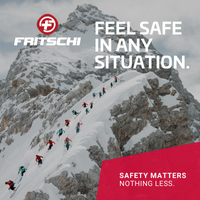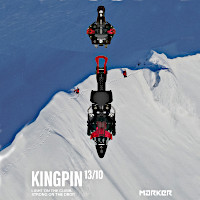


SITE LOGIN
- REVIEWS
- NEWS
- STORE
- ROUTES
- LODGING
-
VIDEOS
- 2022/23 Gear Reviews
- 2021/22 Gear Reviews
- 2020/21 Gear Reviews
- 2019/20 Gear Reviews
- 2018/19 Gear Reviews
- 2017/18 Gear Reviews
- 2016/17 Gear Reviews
- 2015/16 Gear Reviews
- 2014/15 Gear Reviews
- 2013/14 Gear Reviews
- 2012/13 Gear Reviews
- 2011/12 Gear Reviews
- 2020 Outdoor Retailer
- 2019 Outdoor Retailer
- 2018 Outdoor Retailer
- 2017 Outdoor Presscamp
- 2017 Outdoor Retailer
- 2016 Outdoor Presscamp
- 2016 Outdoor Retailer
- 2015 SIA Show
- 2014 Outdoor Retailer
- 2013 SIA Show
- 2012 Outdoor Retailer
- Tips and Tricks
- Backcountry Skiing
- SAFETY
- ABOUT
- REVIEWS
- NEWS
- STORE
- ROUTES
- LODGING
-
VIDEOS
- 2022/23 Gear Reviews
- 2021/22 Gear Reviews
- 2020/21 Gear Reviews
- 2019/20 Gear Reviews
- 2018/19 Gear Reviews
- 2017/18 Gear Reviews
- 2016/17 Gear Reviews
- 2015/16 Gear Reviews
- 2014/15 Gear Reviews
- 2013/14 Gear Reviews
- 2012/13 Gear Reviews
- 2011/12 Gear Reviews
- 2020 Outdoor Retailer
- 2019 Outdoor Retailer
- 2018 Outdoor Retailer
- 2017 Outdoor Presscamp
- 2017 Outdoor Retailer
- 2016 Outdoor Presscamp
- 2016 Outdoor Retailer
- 2015 SIA Show
- 2014 Outdoor Retailer
- 2013 SIA Show
- 2012 Outdoor Retailer
- Tips and Tricks
- Backcountry Skiing
- SAFETY
- ABOUT
TOP VIDEOS
- Home
- »
- REVIEWS
- »
- Ski Gear
- »
- Skis
- »
- Peak 104SC Skis
Peak 104SC Skis
A new direct-to-consumer ski company launched in 2022 called Peak was started out of Bozeman, Montana by co-founders Bode Miller and Andy Wirth. Yup, that Bode Miller—the winningest male alpine ski racer in U.S. history. Bode has won six Olympic and five World Championship medals (including four golds) and has 33 World Cup wins to his credit with a total of 79 podiums, and two World Cup overall globes. So it is safe to say that Bode knows a thing or two about skiing and skis. He is now the Chief Innovation Officer at Peak Skis but this is not the first time he’s tinkered with ski design. He is credited with developing the modern sidecut found on today's carving skis. Early in his racing career he cut a deep-sidecut snowboard in half and used them as skis to carve deep trenches in the snow. The ski that was then designed from this prototype incorporated this new aggressive sidecut which allowed Bode to earn himself a spot on the U.S. Ski Team. Bode is known for his aggressive skiing style and is said to have crashed on more racecourses than any other racer. He liked to race on the edge and was willing to fail in order to win and he has carried over these principles to Peak Skis.
- SHOW THE REST OF THE REVIEW / PHOTOS / VIDEOS
-
Peak’s lineup of skis consists of six all-mountain and side-country skis. They are the Peak 88, 98, 104, and 110, with the 98 and 104 skis being available in lighter, slightly softer 98SC and 104SC versions. These two versions are designed with ski touring and backcountry riding in mind as the ‘SC’ stands for side country
In this review, we’re going to focus on the most versatile ski in Peak’s lineup, the 104SC. Peak describes it as a 30% on-trail and 70% exploration ski. The 104SC has the same shape and rocker profile as the regular 104 so it carves and floats in powder exactly the same but is a few hundred grams lighter which makes it all that much better for ski touring.
Peak uses a lightweight "powder core" construction which consists of poplar and paulownia wood along with polyurethane stringers for increased vibration reduction. In addition to this, there is a metal layer with an extended mounting plate that increases the ski's underfoot grip.
Early rise tips with a very large progressive rocker profile allow the 104SC Skis to float in the deepest of snow while their lighter weight (than the regular 104 Skis) makes them ideal for touring. Combine this with a 104mm width underfoot and fat 134mm tips and you have a ski that can easily bust through crud once the fresh lines are gone.
Generous camber underfoot provides rebound from the previous turn which helps initiate the next one so linking up turns rapidly requires very little effort. This camber also helps pre-flex the ski so that when it is loaded at the apex of the turn it increases edge contact with the snow and optimizes grip.
The tails of the 104SC Skis are fairly flat with minimal early rise so that they can crisply finish out the turn on hard pack but still provide some versatility for tighter radius turns.
The main design feature that’s found in the non-SC Peak skis is their use of ‘Keyhole Technology’. This is essentially an oval cut from the upper metal layer of the ski's construction which creates an inflection point in the ski's longitudinal flex pattern. This reduces the torsional rigidity at the tip of the skis relative that that underfoot where more rigidity is required. This allows for more power transmission at a higher edge angle to drive the skis through the turn as well as provides more forgiveness at lower edge angles. It also allows Peak to reduce the ski's sidecut allowing them to be more playful and thus more appealing to a full range of skiers in all sorts of conditions. It should be known, however, that the SC version of the 104 does not use Keyhole Technology.
Materials:
- Poplar/Palownia wood core with Isocore
- Titanal
- Glass fiber
Features:
- Designed by Bode Miller
Verdict:
When I heard about this new ski company that Bode Miler had founded I was very interested in reviewing their new all-mountain touring ski, the 104SC. Given Bode's experience and history of winning races, I was sure that these skis would be something very unique. I tested the 104SCs on resort groomers and out of bounds on deeper backcountry lines as this is what these skis were designed for—a bit of everything. They came mounted with the Marker Alpinist 12 Bindings to help keep them light for touring, yet still able to ski the resort when needed.
The first thing I noticed about the 104SC Skis is that they are very forgiving and smooth. The amount of early rise on these skis starts very low down from the tips so they obviously float very well on deep snow days, yet they are also still fairly stable at speed, in fact, they actually relish it. The ski's need for speed must be due to Bode’s experience in building skis and his racing background which is built into their construction. On hard-pack snow charging fast, tip chatter is minimal and the skis feel planted and solid.
In addition to going fast, I found these skis to be very agile when there is fresh snow underfoot. They are actually more at home on soft snow than hard, firm, or crusty snow. While they grip well on groomers I wouldn't say that they are railing the turns easily, you need to drive them and stay on them so that their edges follow through the full arc of the turn as their rocker profile shortens their effective edge and they can want to release early. There is a little bit of give to their edges that allow the ski to smear a little and this is what makes them so versatile in various conditions. They are an all-around ski that can do a bit of everything well, not pure carving skis, not pure touring skis, but positioned in the sweet spot in the middle which is what most skiers are looking for.
While the Peak 104SC Skis are fun on groomers, chop, and pow and they are not overflowing with personality. I like to ski fast so I really enjoy that aspect of the 104SCs. I can trust them underfoot but in shorter radius turns their 104 width takes a little more energy to put them on edge, especially in rapid-fire tight turn situations like bumps and trees. I found that the amount of rebound and pop out of a turn could be a little more pronounced which would help with the overall fun factor. You really need to feed them energy in order to have it returned back to you at the end of the turn. Their relatively flat tails help with stability and completing long arcing turns but I was lacking the confidence to really lay them over on edge as they don’t bite into the snow with aggression—especially on really firm snow or ice. I found that more forward pressure helped set their edges at the start of the turn which produced more grip throughout the turn and I could carve them with added reassurance. These are solid skis and on the heavier side for a dedicated touring ski but this is what allows them to plow through broken snow and be forgiving should they start to deflect. They really come alive when they are floating through 10-15cm of fresh—that's when the fun factor is ratcheted up.
The 104SC Skis are for the skier who likes to rip up the resort for a handful of days with some backcountry exploration as well—someone who wants the versatility to go anywhere at any time. If you like to ski fast and be solid on deep days well after the fresh lines have been mined, then this is a ski to consider. Just be aware that they don’t come cheap, which means their appeal may be limited to those that can afford them.
 |
PROS:
|
 |
CONS:
|
SPECS:
Price: $1,229CAN / $890US
Lengths: 168 / 178 / 184
Dimensions: 134 / 104 / 122
Weight: 3,720g / 8.2lbslbs (184cm pair)
Turn radius: 24.5
Powder Performance 2/2
Groomer Performance 1.5/2
Stability 1.5/2
Weight 1.5/2
Value 1.5/2
Did we miss something? Are we totally out to lunch? Let us know what you think. People like/dislike gear for different reasons so chime in below and we'll get a well-rounded evaluation. You'll need to login or register before you can comment but it only takes a few seconds, then you're good to go.
Leave a Comment:
Copyright © 2009-25 Backcountry Skiing Canada. All Rights Reserved.

















